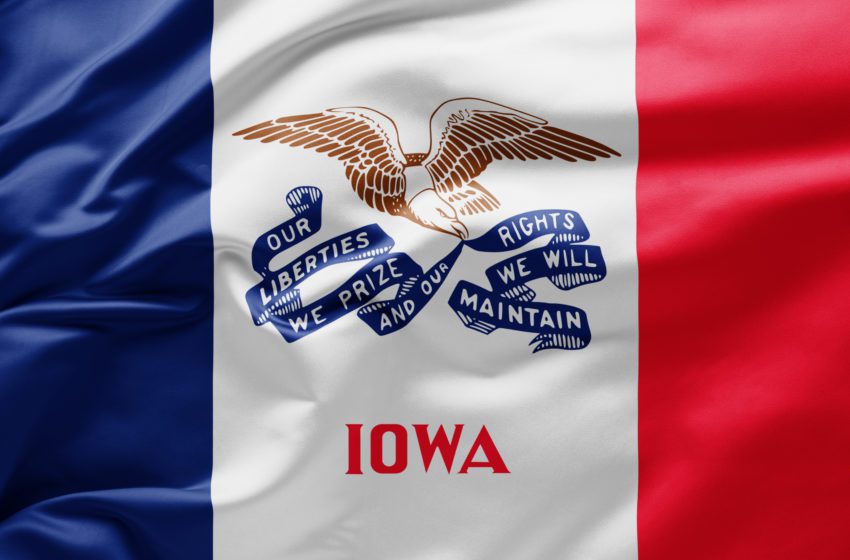In 2024, regulatory challenges and misinformation continued to test the vaping industry.
By VV staff
There is positivity surrounding the nicotine industry. With the Trump administration set to take power in January, many believe it will take a softer stance on flavored nicotine products than the Biden team. The vaping industry continues to survive despite setbacks experienced in 2024, and it continues to grow globally. However, divergent regulatory perspectives on vaping’s harm reduction potential continue to hinder its uptake by cigarette smokers.
The past 12 months could also be labeled “the year of the registry” as several product registry bills were enacted, the most interesting of which was in Florida. Florida’s governor, Ron DeSantis, signed legislation intended to crack down on the sale of unauthorized vapes that the state deems attractive to children. The new law (HB 1007), however, only targets disposable vaping products not authorized by the U.S. Food and Drug Administration. The rules will be enforced beginning Oct. 1.
Unlike other state registry lists, Florida is the first state in the U.S. to include a carve-out for refillable pod systems, open-system vaping products, and bottled e-liquids. Florida Smoke Free Association President and entrepreneur Nick Orlando was a driving force behind getting the open-system exemption. In its original form, the bill would have prohibited sales of any vape products that had not yet received FDA approval.
Orlando said that if any area of the vaping industry genuinely needs reform, it is at the federal level and within the FDA review and approval process. “The FDA’s Center for Tobacco Products [CTP] is supposed to comply with a statutory, 180-day deadline to review new tobacco product applications, many of which are potentially less harmful than combustible cigarettes,” said Orlando. “However, as Florida’s vape manufacturers have experienced, working through this process is often a painstaking, costly and onerous ordeal that has resulted in a backlog of thousands of applications that have sat with the CTP for years.”
Also this year, the FDA approved menthol vapes for the first time. The regulatory agency authorized four Njoy products through the premarket tobacco product application (PMTA) pathway. The FDA issued marketing granted orders to Njoy, an Altria subsidiary, for two pods for its Ace closed e-cigarette device, which was authorized in April of 2022, and two disposable e-cigarettes—Njoy Daily Menthol 4.5 percent and Njoy Daily Extra Menthol 2.4 percent.
The two authorized Ace pods are the Njoy Ace Pod Menthol 2.4 percent and the Njoy Ace Pod Menthol 5 percent. All four of the newly authorized products are prefilled and nonrefillable. The decision is significant because it is the first nontobacco-flavored vapor product to be authorized by the FDA. In his TPL review, Office of Science Director Matthew Farrelly said that Njoy had “demonstrated the potential for these new products to benefit adults who smoke [combustible cigarettes] as compared to those who continue to use [combustible cigarettes] exclusively” and that the company had “also proposed robust marketing plans that include restrictions beyond those required with PMTA authorization.” Farrelly also highlighted data from a longitudinal cohort study that Njoy submitted with its application, which pointed to “robust absolute switching rates” and a higher rate of complete switching than tobacco-flavored Njoy Daily.
Another pressing issue in 2023 is that critics continue to accuse the vaping industry of avoiding responsibility for the environmental damage caused by disposable vaping products. Federal regulators have failed to pass measures that would make vaping components easier to recycle or more eco-friendly. Some regulations have been proposed to lessen the products’ environmental impact. For example, standards could be put in place requiring them to be reusable or mandating that manufacturers fund collection and recycling programs.
According to the Centers for Disease Control and Prevention, disposable e-cigarettes account for about 53 percent of the multibillion-dollar U.S. vaping market, which has more than doubled in size since 2020. Several states, including New York and California, have extended product responsibility laws for computers and other electronics, but those rules don’t apply to vaping products. At the federal level, there are no regulations specifically for the disposal of vaping products.
Some experts say that the devastating environmental impact could last centuries without action. Ultimately, 2024 witnessed significant milestones in combustible smokers making the switch to less risky nicotine-delivery systems. That trend is expected to continue into next year. Looking back on this year, below is a month-by-month recap of the vaping industry’s most prominent headlines of 2024.
January
A group of Juul Labs investors challenged a November 2022 financial bailout by directors Nick Pritzker and Riaz Valani, alleging that the deal benefited insiders at the expense of other investors. Jan. 1, 2024, marked the official launch of McKinney Specialty Labs, a scientific organization with expertise in testing nicotine and other aerosolized products.
On Jan. 3, the U.S. Court of Appeals for the 5th Circuit ruled that the FDA acted “arbitrarily and capriciously” in rejecting the premarket tobacco product applications of Wages and White Lion Investments, doing business as Triton Distribution, and Vapetasia for approval to sell their products in the United States. The Supreme Court of the United States rejected R.J. Reynolds Tobacco Co.’s bid to challenge a voter-approved ban on flavored vaping and other tobacco products in California, the most populous state in the U.S.
February
Philip Morris International and BAT settled their ongoing intellectual property disputes relating to heated-tobacco and vapor products. The U.S. Food and Drug Administration continued its de facto flavor ban. It issued marketing denial orders to Fontem US for four Blu disposables and one Myblu brand e-cigarette product. The attorney general for North Carolina announced the launch of an online, searchable public depository containing nearly 4 million documents from the state’s lawsuit against e-cigarette manufacturer Juul Labs.
R Street Institute released a report that explores how flavors can influence behavior and why well-intentioned efforts to ban flavored tobacco and nicotine products can have unintended consequences. BAT’s Italian division was fined €6 million ($6.4 million) for “misleading advertising of a heated-tobacco product.” Amazon was fined €1 million for the same reason.
March
Belarus’ State Committee for Standardization banned 47 types of electronic cigarettes from sale because they contained unlawful levels of nicotine. The highest court in Massachusetts ignored objections from vape shop owners and tobacco retailers and upheld the legality of a novel bylaw in the town of Brookline that bars cigarette sales to anyone born after Jan. 1, 2000. The chairmen of five key Senate committees warned the chief executives of major convenience stores and wholesalers to stop selling illicit flavored vaping products.
A federal judge approved the final part of a class action settlement with Juul Labs and its parent company Altria, bringing the settlement total to just over $300 million. The Office of the Solicitor General filed a petition for certiorari in the case of the FDA v. Wages and White Lion Investments, asking the Supreme Court to review the U.S. Court of Appeals for the 5th Circuit’s en banc decision concluding that the FDA’s denial of some premarket tobacco product applications was arbitrary and capricious. The global vaping company Plxsur reached its goal of reaching $1 billion in consolidated revenues from its partners in just two years.
April
The governor of Vermont, Phil Scott, vetoed legislation banning the sale of flavored vaping and tobacco products in the state. New York City Mayor Eric Adams and New York City Corporation Counsel Sylvia O. Hinds-Radix announced that the city of New York filed a lawsuit against 11 wholesalers for their part in the illegal sale of flavored disposable e-cigarettes.
Kentucky Governor Andy Beshear signed House Bill 11 into law, making Kentucky the sixth state in the U.S. with a registry law. Lawmakers approved British Prime Minister Rishi Sunak’s plan to ban anyone aged 15 and under from ever buying cigarettes. Kazakhstan’s President Kassym-Jomart Tokayev signed a bill banning the sale and distribution of vaping products.
The U.S. Marshals Service seized more than 45,000 unauthorized e-cigarette products valued at more than $700,000 in California. Florida is the first state in the nation to include a carve-out in vape registry for refillable pod systems, open-system vaping products and bottled e-liquids. The board of directors for the Brazilian Health Surveillance Agency (Anvisa) voted unanimously to maintain a ban on the sale of e-cigarettes and other vaping products.
May
The U.S. Drug Enforcement Administration asked the White House for permission to reclassify marijuana as a less dangerous drug. The Oregon Court of Appeals upheld a Washington County ban on flavored tobacco sales. The FDA uploaded the first update to its Searchable Tobacco Products Database, which provides an overview of tobacco and vapor products that may be legally marketed in the United States. Filtrona launched a series of new filters for heated-tobacco products, the Boreas range.
The FDA filed several modified-risk tobacco product renewal applications submitted by Philip Morris Products for several IQOS products for scientific review. A study published in Thorax found associations between the use of social media platforms and the risk of combustible cigarette smoking and vaping among youth. A judge in Ohio ruled that the state law that prohibits cities from banning flavored tobacco is unconstitutional. The Supreme Court of Justice in Panama ruled unanimously that Panama’s ban on the sale of all vaping products is unconstitutional. The FDA announced that it is seeking civil money penalties from nine brick-and-mortar retailers and one online retailer for selling Elf Bar products.
June
The FDA updated its import alert, which includes a “red list” of manufacturers, distributors and brands of vapor products that may be detained “without physical examination.” The FDA reversed a marketing denial order issued to Juul Labs for its vaping products. Governor DeSantis vetoed a bill that aimed to ban delta-8 and other cannabis products. U.S. Senators criticized top health and law enforcement officials for their failure to tame the rapidly growing illicit e-cigarette market.
The FDA authorized four menthol Njoy products through the PMTA pathway. This was the first time a flavored vaping product was authorized. Romania’s Chamber of Deputies adopted a bill banning advertising of electronic cigarettes and nicotine pouches. Philip Morris International halted sales of Zyn nicotine pouches on its U.S. website as Washington, D.C., officials investigate the company’s compliance with the district’s ban on the sale of flavored tobacco products.
Altria Group submitted PMTAs to the FDA for its “On! Plus” oral nicotine pouch products. New York state received $112.7 million from a multistate settlement with Juul Labs Inc. due to the vaping company’s involvement in the youth vaping epidemic. The Supreme Court of the United States ruled 6-3 to overturn the “Chevron deference,” a backbone principle for how the federal government keeps corporations in check.
July
R.J. Reynolds Vapor Co., an operating company of Reynolds American Inc., the BAT Group’s U.S. subsidiary, announced that it is expanding its vapor portfolio with SENSA, a zero-nicotine vapor product. Australia became the first country to restrict the sale of vapes to pharmacies when its laws surrounding vaping products went into effect. The U.S. Supreme Court agreed to hear the FDA’s defense of the agency’s rejection of Triton Distributing’s PMTAs.
North Carolina Governor Roy Cooper signed into law a vape registry bill. The U.K.’s Labour government will propose a bill to gradually raise the legal age for purchasing cigarettes and impose restrictions on the sales and promotion of vaping products, as confirmed by King Charles III in a speech. Philip Morris International said that it will invest $600 million in a factory in Aurora, Colorado, to help meet U.S. consumers’ growing appetite for the company’s Zyn nicotine pouches.
The Italian government placed CBD on the country’s list of narcotic drugs in defiance of a regional administrative court ruling and in contravention of European Union law. The Philippine government halted the sale, advertising and distribution of vape products online. The Cook Islands banned the manufacture, importation, sale, distribution and advertising of cigarette alternatives such as e-cigarettes. PMI postponed the test launch of its IQOS heated-tobacco device in the U.S. to the fourth quarter.
August
Costa Rica banned vaping in public places such as restaurants, offices and educational institutions. The Haypp Group, the world’s largest online retailer of nicotine pouches, reported net sales of SEK942.8 million ($89.66 million) for the second quarter of 2024, up 23 percent over the comparable 2023 period. RLX Technology reported net revenues of RMB627.2 million ($86.3 million) in the second quarter of 2024, up 66 percent from the comparable 2023 quarter.
The FDA and the Department of the Treasury announced a proposed rule that would require an importer to submit the FDA-issued Submission Tracking Number ENDS products into the electronic imports system operated by U.S. Customs and Border Protection. New data from Action on Smoking and Health U.K. found that more than half of ex-smokers in Great Britain who quit in the past five years—amounting to 2.7 million adults—used a vape in their last quit attempt. VPR Brands reported revenues of $1.77 million for the second quarter of 2024, down from $1.9 million in the comparable 2023 quarter. Gross profit was $451,469 compared with $1.1 million in the second quarter of 2023.
Illinois lawmakers decisively passed a law that forbids vaping companies from targeting teens with their advertising, particularly by promoting electronic cigarettes that resemble school supplies such as highlighters, markers or erasers. Smoore International Holdings reported revenue of RMB5.04 billion ($705.4 million) for the six months that ended June 30, down 1.7 percent from the comparable 2023 period.
An administrative law judge of the International Trade Commission recommended a ban on importing Njoy Ace products into the United States following a patent infringement claim filed by Juul Labs. Philip Morris International’s Swedish Match affiliate announced an investment of $232 million to expand the production capacity of its manufacturing facility in Owensboro, Kentucky. The Kurdistan Regional Government intensified efforts to crack down on the use of e-cigarettes, with both the Ministry of Health and the Ministry of Interior enforcing a decision to ban their import and sale.
September
Illinois Senator Dick Durbin condemned top health and law enforcement officials for their, in his eyes, inadequate efforts in combating the surge of illegal disposable e-cigarettes among young people in the U.S. Representatives from PMI began pitching the benefits of its IQOS heated-tobacco device to Nevada state lawmakers. Police in Allen, Texas, secured evidence and marched out business owners in handcuffs for selling what attorneys for the vape shops say were legal cannabis products.
The FDA announced a final rule raising the minimum age for certain restrictions on tobacco product sales. A review of evidence by a team of scientists found that e-cigarettes are among the top 3 most effective tools to stop smoking. Accorto Regulatory Solutions joined the Global Institute for Novel Nicotine, an organization dedicated to advancing tobacco harm reduction through supporting the research and development of nonvaporized tobacco alternatives for adult smokers. The Great Smoky Cannabis Dispensary opened in North Carolina for its first recreational marijuana sales for anyone over the age of 21.
Irish Health Minister Stephen Donnelly proposed bans on nontobacco vape flavors and advertising in nonspecialized shops. The FDA issued six warning letters to manufacturers and retailers for selling or distributing unauthorized e-cigarette products promoted at an industry trade show. PMI recorded a record loss of about £220 million ($198 million) on the sale of its inhaled-therapeutics Vectura Group unit to Molex Asia Holdings in the third quarter.
Tucker Carlson announced plans to introduce a nicotine pouch brand called ALP in November. U.S. President-elect Donald Trump said he will save flavored e-cigarettes. The European Commission approved France’s bid to ban disposable vapes. The U.S. Department of Health and Human Services updated its regulations to reflect the required annual inflation-related increases to civil money penalties, consistent with the Federal Civil Penalties Inflation Adjustment Act Improvements Act of 2015.
October
The FDA cleared an Investigational New Drug application for Qnovia’s RespiRx nicotine inhaler (QN-01). According to Qnovia, the RespiRx is the first truly inhalable nicotine-replacement therapy to assist smokers attempting to quit smoking. PMI pulled its IQOS tobacco-heating device from New Zealand store shelves after a new law took effect requiring vaping devices to have removable batteries. French consumer vaping organization SOVAPE announced that it will dissolve. The group had been active since 2016.
The JT Group completed the acquisition of Vector Group on Oct. 7, following a tender offer. Ispire Technology, a company that develops and commercializes vaping technology products, announced a five-year master distributor agreement with ANDS, a Dubai-based distributor in the Middle East, North Africa region specializing in combustion-free nicotine-delivery solutions. Amazon agreed to pay Vermont $400,000 and improve its vetting practices to settle claims that it failed to stop online vendors from selling e-cigarettes. Jamaica supported an updated strategy to accelerate action to meet tobacco control targets in the Americas region.
The minister of mental health and addictions says the federal government will ban most vape flavors across Canada. Guam’s governor, Lou Leon Guerrero, vetoed a bill that seeks a 10 percent tax on vaping and electronic nicotine products. Elf Bar and Lost Mary created a board in the U.K. to provide strategic advice for the brands. The Oregon Court of Appeals struck down a law restricting the packaging of vape and cannabis products on the grounds that the legislation unconstitutionally restricts free speech.
The FDA issued warning letters to nine online retailers and one manufacturer for selling or distributing unauthorized disposable e-cigarettes designed to resemble smart technology, including smartphones and gaming devices. French Health Minister Genevieve Darrieussecq said in an interview with the newspaper Le Parisien that nicotine pouches “are dangerous products because they contain high doses of nicotine” and added that a ban will be announced.
November
The U.K. government introduced its Tobacco and Vapes Bill, which involves some of the world’s strictest anti-smoking rules. A jury trial commenced for a lawsuit filed by the state of Alaska against Juul Labs and Altria Group that alleges that the companies played a significant role in the rising use of e-cigarettes among young people. A survey found that one year after Quebec banned nontobacco-flavored vapes, most vapers are buying such products illegal in the province.
Altria Group beat market expectations for third-quarter revenue and profit as robust demand for its nicotine pouches and vaping products helped soften the blow to its combustible cigarettes category. After a scientific review, the FDA issued a renewal of modified-risk granted orders to Swedish Match for eight General Snus products. A court in The Hague ruled that the Netherlands was allowed to introduce a ban on flavors in e-cigarettes to protect public health. Tobacco stocks rose in the wake of Trump’s victory in the U.S. presidential election.
Ispire Technology reported revenue of $39.3 million for the first quarter of 2025, down from $42.9 million in the comparable 2024 quarter. Mayor Adams and New York City Acting Corporation Counsel Muriel Goode-Trufant announced that the city of New York filed a federal lawsuit against a major distributor of disposable flavored e-cigarettes. Mexico’s top court ruled that a ban on imports of e-cigarettes and related products was unconstitutional. Tucker Carlson launched his own nicotine pouch brand, ALP, which the conservative American commentator touted as “the first nicotine pouch brand made by and for adults who unapologetically love nicotine.”
Trump nominated Robert F. Kennedy, Jr. to serve as the new secretary of the Department of Health and Human Services. The Swedish government released data showing that Swedes made history by officially becoming the first country to be “smoke-free.” President Sadyr Japarov signed a law prohibiting the import, circulation and use of electronic cigarettes.
A report from the CDC Foundation and Truth Initiative showed that from 2019 to 2023, there was a 47 percent increase in e-cigarette unit sales at U.S. retail outlets. The Surgeon General of the United States released a report on health disparities related to tobacco use. Imperial Brands reported a dip in revenue despite double-digit growth in its electronic cigarettes division and growth in its traditional tobacco division. Spain began a public consultation on new rules for vaping devices. A landmark bill in the United Kingdom to ban its younger generation from smoking cleared its first hurdle in the House of Commons.
December
(Editor’s Note: This magazine went live in December, so the month may be incomplete.) Tobacco Reporter, after 150 years of nicotine industry news, ended the publishing of its magazine. Vietnam’s National Assembly approved a measure to prohibit the production, sale, import, storage, transportation and use of e-cigarettes starting in 2025. The United States Supreme Court heard oral arguments in FDA v. Wages and White Lion Investments LLC, a pivotal case concerning the FDA’s rejection of applications to market flavored nicotine vaping devices. The U.S. Drug Enforcement Administration began sharing details about its long-anticipated hearings on its cannabis rescheduling publicly.
A survey by online retailer Nicokick finds more than 86 percent of current U.S. nicotine pouch users say they are likely to switch to Tucker Carlson’s recently launched Alp brand. Smoking rates in Spain dropped to a record low. The FDA issues warning letters to 115 brick-and-mortar retailers for selling unauthorized e-cigarette products. The warning letters cite the sale of disposable e-cigarette products owned by Chinese manufacturers and marketed under popular brand names, including Geek Bar Pulse, Geek Bar Skyview, Geek Bar Platinum, and Elf Bar.
Looking ahead
Predicting what the vaping industry will look like by the end of 2025 is impossible. Industry insiders expect regulators to crack down on disposable vaping products, and misinformation will likely continue to run wild. Many in the industry believe Trump will change how the FDA regulates vaping products. The sale and use of single-use disposable vapes will be banned in England from June next year, and many other countries are expected to follow suit.
From Feb. 2, 2020, to June 16, 2024, U.S. disposable e-cigarette sales increased by 201.3 percent (4.1 million units to 12.3 million units); their unit share increased from 26 percent to 58.1 percent of total e-cigarette sales, according to the CDC Foundation. France began the process of banning disposable vapes in December 2023. The National Assembly and Senate approved the ban in February 2024, and the European Commission approved it in September 2024.
Additionally, the U.S. will probably see a decline in product variety because the FDA is unlikely to approve many devices. However, the industry should continue to thrive and expand globally, especially in the EU and the U.K. More importantly, innovation should continue to thrive outside the U.S. That could all change, however, as a new president takes office in January in the U.S.
In September, Tony Abboud, executive director of the Vapor Technology Association (VTA) said he had the opportunity to meet with Trump, where Abboud had a wide-ranging conversation, including praising the then President for taking “two bold and decisive actions” in 2019: preventing a ban on flavored vapes for adults and protecting youth by raising the age to purchase nicotine products to 21.
“Since then, youth vaping has dropped to an all-time low, and many adults have used flavored vaping to quit smoking. VTA’s meeting with President Trump represents a great day for small businesses across America who fear the Biden-Harris administration’s efforts to shut down small businesses and deprive adults who smoke of their flavored vaping products,” said Abboud. “We are pleased that [Trump] is continuing to fight for vapers.”
Trump’s nomination of Kennedy to head the Department of Health and Human Services, which oversees the FDA, which regulates vaping, nicotine pouches, and all other nicotine and tobacco products through its Center for Tobacco Products, is also a wild card for the nicotine industry. Kennedy’s position on vaping, nicotine, and tobacco harm reduction remains unknown, making anything a possibility in 2025.










